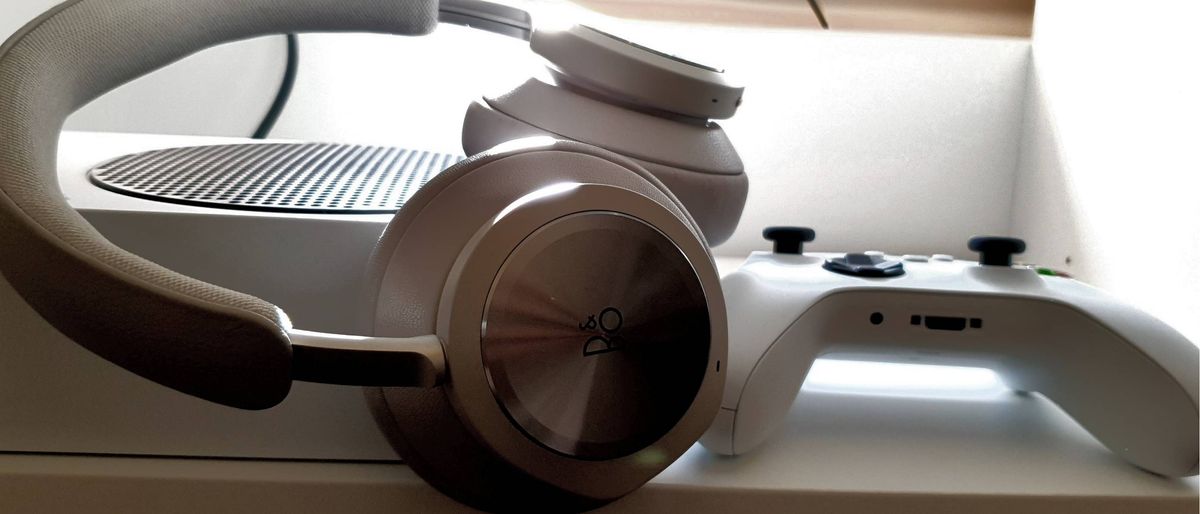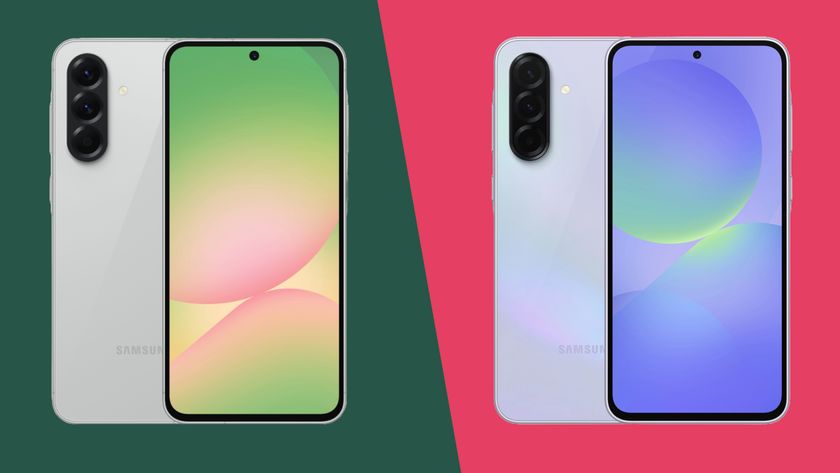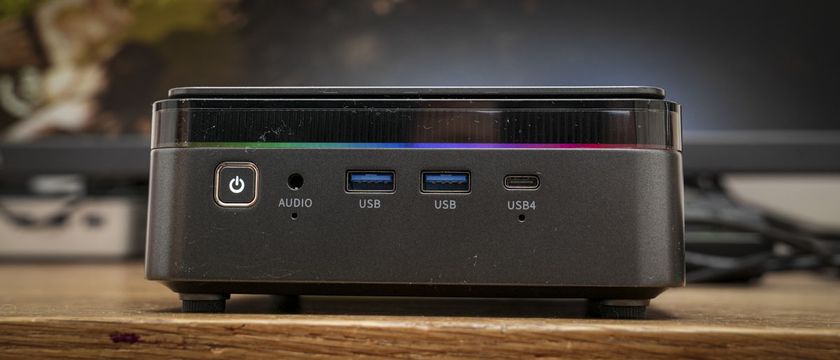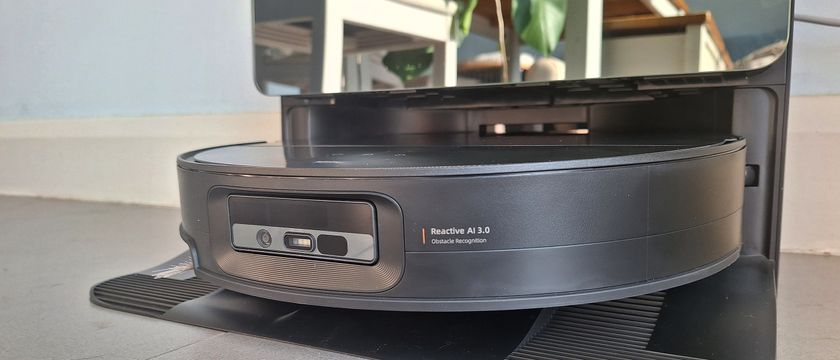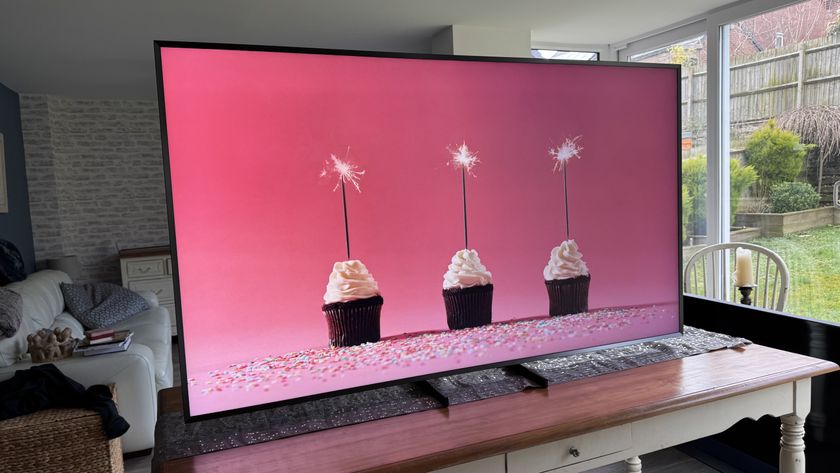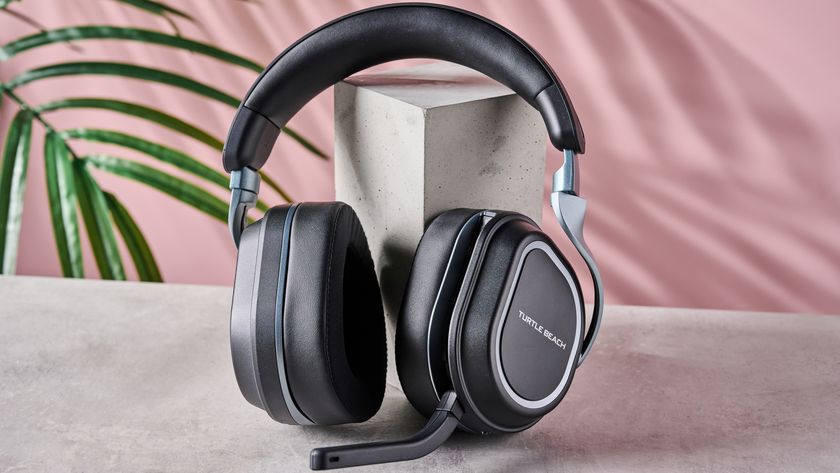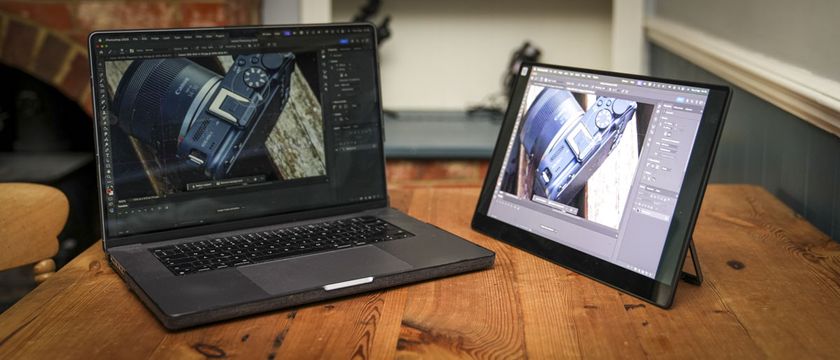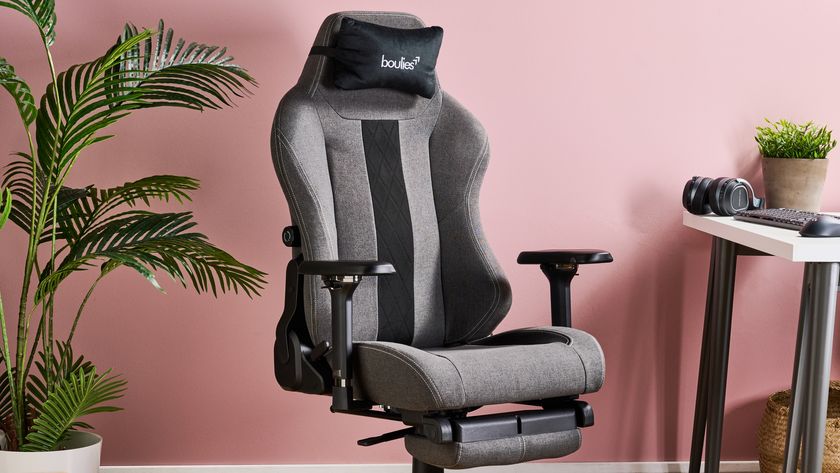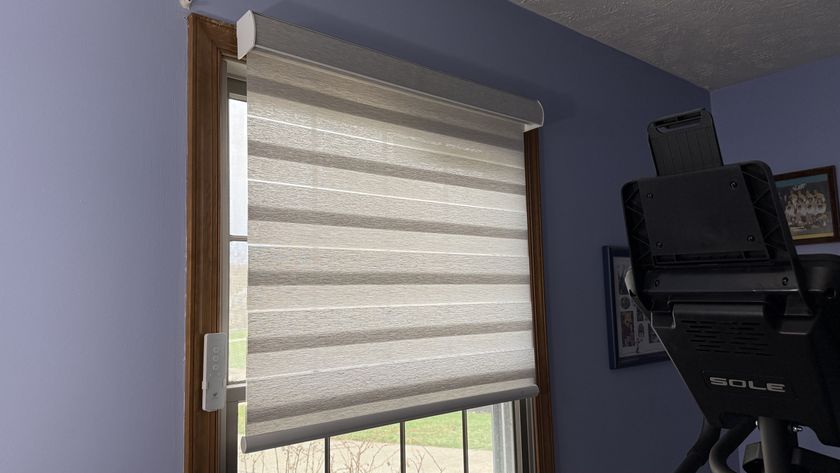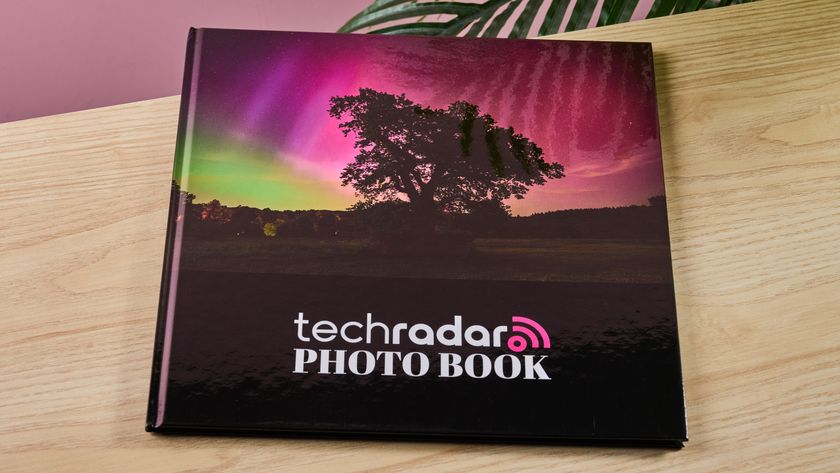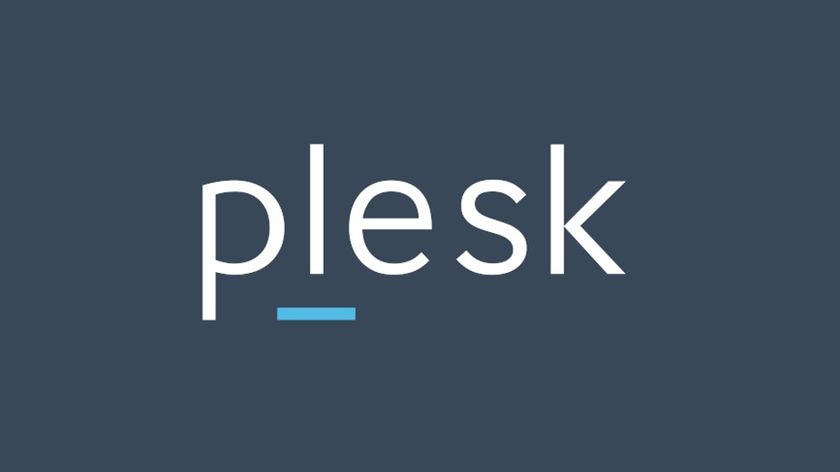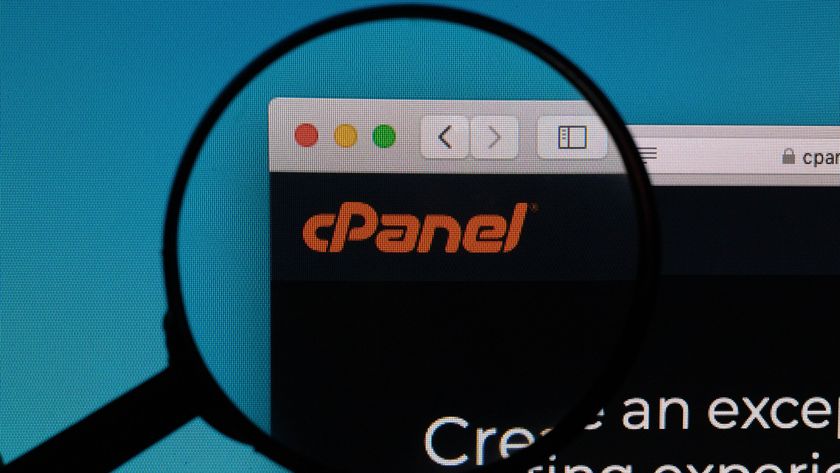TechRadar Verdict
The Bang & Olufsen Beoplay Portal is a beautifully crafted headset that offers supreme comfort and excellent audio quality. It’s also one of the few gaming headsets to offer active noise cancellation, and doesn’t look out of place when worn outside of the home. However, it’s hard to excuse the intermittent connection issues we encountered with the Xbox version at this price, and the inability to play Bluetooth and Xbox audio simultaneously is also a glaring omission.
Pros
- +
Extremely comfortable
- +
Fantastic audio quality
- +
Wired or wireless options
Cons
- -
Connection issues on Xbox variant
- -
No case included
- -
Very expensive compared to rivals
Why you can trust TechRadar
Bang & Olufsen Beoplay Portal two-minute review
The Bang & Olufsen Beoplay Portal is a luxury product aimed at those who want a headset that can basically do it all. It can connect to your Xbox console directly or to your smartphone via Bluetooth, and it can also connect to devices using a 3.5mm headphone jack (though the headset needs to be turned on). A second version released in early 2022 opened the headset up to PS5 and PS4 consoles too thanks to USB-C and USB-A dongles, and also allowed for dual simultaneous-audio support with a mobile connection over Bluetooth. Unfortunately, we never found the Xbox Beoplay Portal edition held a completely rock-solid connection when connecting to an Xbox console, with intermitted issues often cropping up during our play sessions.
Unlike the majority of gaming headsets, the Beoplay Portal is built using high-end materials, like super soft lambskin on the earcups and a knitted bamboo fiber textile on the headband. Weighing in at just 282 grams, the Beoplay Portal is also incredibly light, which means the headset can be worn comfortably for hours on end. These premium materials warrant a premium price point, however. At $499 / £449 (about AU$690), the Beoplay Portal is an extremely expensive pair of headphones.
Another advantage the Beoplay Portal has over its competitors is active noise cancellation. While the feature is probably superfluous for most households, the ANC comes into its own when you take the headphones on the move. It’s not the most powerful ANC solution we’ve tested, but the upshot is that Bang and Olufsen’s solution doesn’t create any noticeable pressure or that ‘underwater’ feeling that some ANC headphones can create.
You can adjust the ANC, volume, and ‘Own Voice’ technology using the headset’s touch controls, which work exceptionally well. Double-tapping one of the earcups can also mute your microphone or stop the playback of your music.
For more granular control, the Bang & Olufsen App can be downloaded from the iOS or Google Play Store. The app lets you change and store various EQ settings, volume and ANC quickly and effectively. We did find that the B&O app could sometimes fail to detect our headset, though, which can be frustrating.
The Beoplay Portal is feature-rich, then, but one glaring omission is the headset’s inability to play Bluetooth and Xbox audio simultaneously. You can only listen to one active sound connection at a time, which feels noticeably restrictive when other, cheaper headsets have this option. Note that the 2022 PS5 variant does offer dual audio support though, letting you merge audio from your console and a connected Bluetooth device at the same time, handy for instance for taking a call mid-game.
Few rival gaming headsets sound as arresting as the Bang & Olufsen Beoplay Portal. We did find that the default EQ needed some serious tweaking to create the type of listening experience we desired when gaming, but we expect most will be pleased with the headset’s immersive sound. When listening to music, the Beoplay Portal sounds even better, something that we don’t often say about other gaming headsets.
The Bang & Olufsen Beoplay Portal gaming headset is a compelling product if you’re looking for a pair of do-it-all headphones that you can comfortably wear at home or on the go. However, the frequent connection issues we encountered with the Xbox version, its lack of simultaneous Bluetooth playback, and the average battery life make the Beoplay Portal hard to justify for its high price point for fans of Microsoft's machine. Those picking up the newer PS5 edition however will benefit from having lots of these issues ironed out though, so if you've a choice to make between the two, go for the PS5 variant.
Price and release date
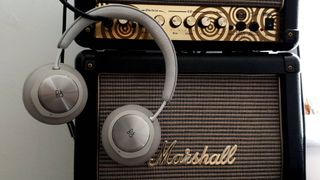
- Available to buy now
- $499.99 / £449.99 (about AU$690)
- Three colors available
The Bang & Olufsen Beoplay Portal for Xbox was released on May 12, 2021, and comes in three colors: Navy, Grey Mist, and Black Anthracite. It costs the same as an Xbox Series X at $499.99 / £449.99 (about AU$690), which is significantly more expensive than other high-end gaming headsets for Xbox consoles like the Audeze Penrose X and Astro A50 Gaming Headset, which both cost $299 / £249 (about AU$550) respectively. The headset does come with a license to Dolby Atmos, though, which usually costs $15 / £15 / AU$20. A PlayStation-compatible variant launched in February 2022 at the same price point, with the same color options.
Design
- Fantastic build quality
- Feather-light for a headset
- B&O App can be iffy
One of the most appealing aspects of the Bang & Olufsen Beoplay Portal’s meticulous design is that the headset doesn’t look like a pair of gaming headphones at all. There’s no flamboyant logos, searingly bright-colored accents, or big microphones attached. Instead, the Beoplay Portal is refreshingly understated and exudes quality. You’ll turn heads for the right reasons when wearing this outside the home.
With lambskin leather earcups, finely milled aluminum, and composite polymer, the Beoplay Portal’s exceptional build quality is noticeable from the moment you pick it up. It feels completely effortless to wear, too, thanks to its lightweight design and breathable materials, and the left and right earcups are clearly marked thanks to large ‘L’ and ‘R’ letters printed inside.
The Beoplay Portal can be controlled using the Bang & Olufsen app or by using the headset’s two touch bars on either side of the headset. Even though a regular volume dial would suffice, there’s something rather appealing about the Beoplay Portal’s touch bar controls, which work exceptionally well. Further functionality is also offered by tapping the outside of the earcups, which can pause music or mute your mic.
The app lets you adjust, select and save various EQ settings, and also adjust the intensity of the active noise canceling feature. Sometimes the app can fail to connect, which is frustrating, but overall we found it to be a decent companion to the Beoplay Portal with enough functionality on offer that it didn’t feel burdensome to use.
While it might go underappreciated by some, we enjoyed how quickly the Beoplay Portal headset turns on, and the two-button system that controls power and also lets you switch between devices. It’s simple and elegant, though it’s a shame there aren’t any spoken audio cues that let you know how much battery remains and to which device you’re connected.
Audio performance
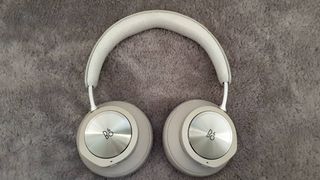
- Pristine sound quality
- EQ may require some tweaking
- ANC is a nice addition
With a rich history of delivering high-end audio products, it’s perhaps somewhat unsurprising to hear that the Beoplay Portal headset sounds excellent. We were particularly impressed by just how detailed and energetic the sound was when listening to music, with all our favorite genres faring equally well when listening via Bluetooth or using the headphone’s 3.5mm jack.
However, when gaming on Xbox, the Beoplay Portal lacks the sort of wider soundstage we’ve come to appreciate from other headphones. This can be rectified somewhat by fiddling with the EQ settings and using Dolby Atmos (available on the Xbox model, but not PS5 where Sony's 'Tempest' spatial audio tech takes over), which thankfully did let us tailor the audio more to our liking, but they still don’t sound quite as lively or engaging when playing games when compared to listening to music. We also wouldn’t recommend them for keen competitive gamers, though again, you can tweak the EQ to focus on footsteps, etc.
While we found ANC to be a slightly superfluous addition when gaming in our living room, the Beoplay Portal’s active noise canceling did a fine job at reducing the amount of audible fan noise we could hear when PC gaming. It’s more a feature for when you’re commuting or wearing the headphones outside, but we’re glad it’s included nonetheless.
The Beoplay Portal thankfully doesn’t disappoint when it comes to audio quality, then, but just bear in mind that it might not sound quite as compelling as some dedicated gaming headset. The upside, though, is the Beoplay Portal really makes music come to life.
Microphone quality and wireless connectivity
- Microphone works well enough
- Frustrating connection issues
- Acceptable battery life
The Bang & Olufsen Beoplay Portal’s microphone uses clever beam-array technology to create a virtual boom mic. The result is a mic that sounds perfectly acceptable but isn’t exactly broadcast quality. It does make your voice sound slightly echoey, as though you’re speaking in an empty room, but we never heard any complaints during Xbox party chats or when taking phone calls.
Wireless connectivity is where the Beoplay Portal unexpectedly struggles, sadly – at least with the Xbox-oriented model. We found that when connected to an Xbox Series X, we encountered interference and the odd disconnect during a week of testing. Sometimes our experience would be flawless, but moving around and raising our hands closer to the headset seemed to exacerbate the issue. Bluetooth was less of an issue, but even then, we’d sometimes hear the odd skip during music playback.
This can hopefully be fixed with a future firmware update, but when so many cheaper headsets don’t struggle with this issue, it’s disappointing that the Beoplay Portal does.
The PS5 version of the Beoplay Portal seems to benefit from the added development time, however. We saw no connectivity issues when connecting over a USB-C dongle connection to our PS5 after dozens of hours of playtime. In addition, it benefits from the aforementioned option to have a simultaneous Bluetooth connection running, alongside the USB-C audio wireless beaming to the cans. With independent volume sliders easily accessible in the app, we enjoyed being able to listen to a podcast while questing away in Fenyx: Immortals Rising. On occasion, we noticed some interference when a mobile notification was coming in using this dual connection, but nothing so troublesome to cause major concern.
In terms of battery life, the Xbox version of the Beoplay Portal offers 12 hours of wireless performance and lasts up to 24 hours if you’re utilizing Bluetooth only with ANC on. We found the headset hit those numbers during our testing but would have liked to see a little bit more longevity when using the Beoplay Portal when gaming.
Battery life is more robust on the PS5 version. You'll get closer to 19 hours with wireless and Bluetooth connectivity running alongside ANC, and upwards of 40 hours with just Bluetooth enabled.
A lengthy USB C cable is provided for charging, and the headset takes approximately three hours to fully charge.
Should you buy the Bang & Olufsen Beoplay Portal?
Buy it if…
You want one pair of headphones for gaming and music
Gaming headsets tend to fall flat when it comes to music, but we found that the Bang & Olufsen Beoplay Portal sounded exceptional when listening to all types of music. We’d argue they’re slightly better for audiophiles than gamers, as they’re not the most energetic sounding headphones when gaming.
You want a versatile pair of headphones
The Beoplay Portal may be designed for consoles, but they're pleasingly versatile. The headset can connect to your Xbox or a device via Bluetooth, but you can also use the included 3.5mm headphone jack. The PS5 version goes on step better by allowing for a second simultaneous connection over Bluetooth when using the USB dongle connection, too.
You value comfort above everything else
It’s hard to understate just how comfortable the Beoplay Portal is when it’s resting on your noggin. The lambskin leather and memory foam provide a snug and secure fit, and the clamping pressure of the headset never caused any discomfort, even after many hours.
Don’t buy it if…
You play on Xbox and want a wireless pair of headphones that can play Bluetooth simultaneously
One big disappointment with the Beoplay Portal's Xbox version is that you can’t listen to Xbox and Bluetooth audio at the same time. With significantly cheaper headsets like the Xbox Wireless Headset and SteelSeries Arctis 9X offering this functionality, it’s a glaring omission from this premium headset. Thankfully, it's not a problem with the PS5 version.
You’re sensitive to sound drops/minor disconnects
We experienced several minor disconnection issues and sound drops when using the Beoplay Portal, particularly on the Xbox version, which can lead to the odd audio skip or crackle. While we never found it to be a deal-breaker, those who demand a flawless connection at all times won’t gel well with these cans.
Additional analysis of the PS5 version of the Beoplay Portal provided by Gerald Lynch.
- Best Xbox Series X headsets: treat your ears
- Best PlayStation 5 headsets
Adam was formerly TRG's Hardware Editor. A law graduate with an exceptional track record in content creation and online engagement, Adam has penned scintillating copy for various technology sites and also established his very own award-nominated video games website. He’s previously worked at Nintendo of Europe as a Content Marketing Editor and once played Halo 5: Guardians for over 51 hours for charity. He is now an editor at The Shortcut.
